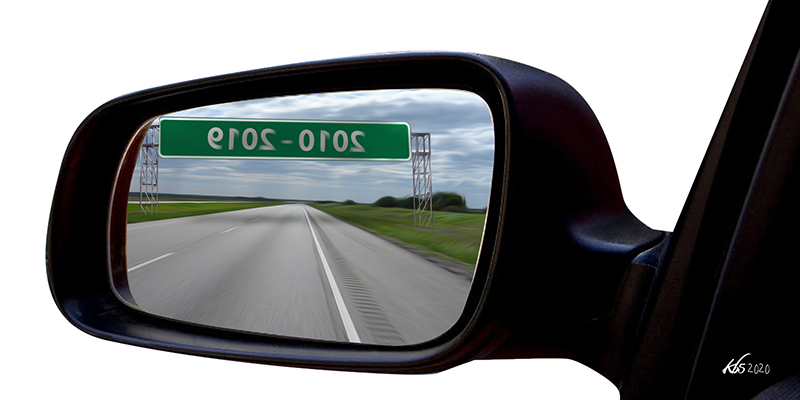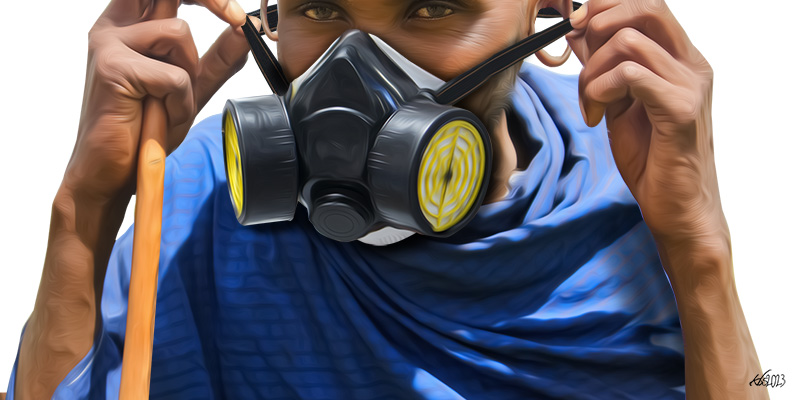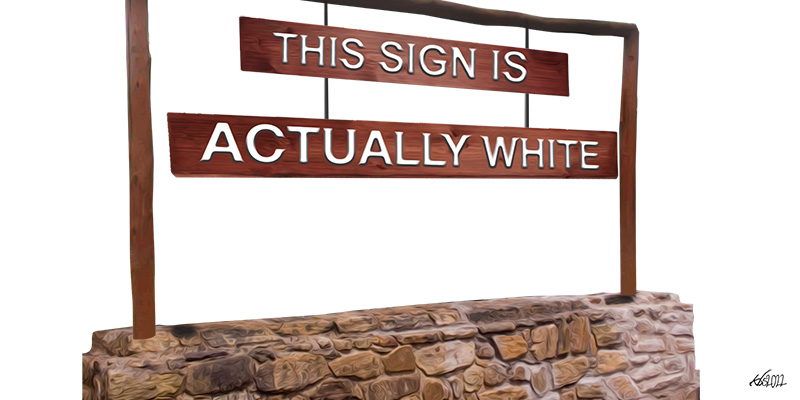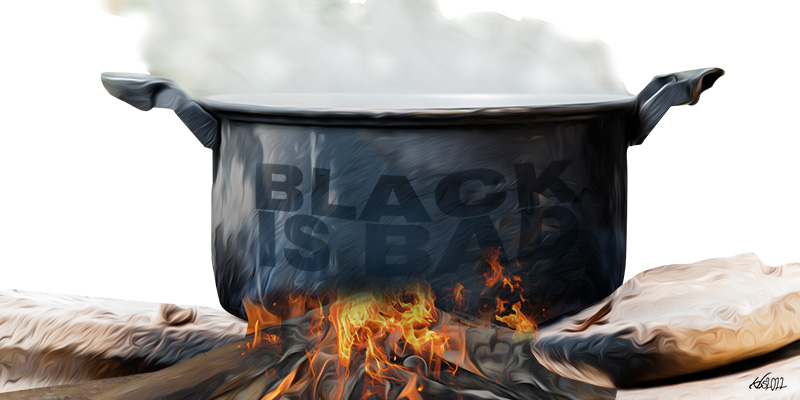Over the past several months and weeks, there has been a deluge of diagnoses of the 2010s, sometimes accompanied by prognoses for the 2020s. Such retrospectives and reflections, infinitely varied in their sagacity and silliness, are ritualised cognitive efforts by modern societies to make sense of the messy complexities, mind=boggling contradictions, and massive changes of the various historical conjunctures of modernity.
Periodisation is of course central to the historian’s craft and the historical imagination in general. Decades, like centuries and millennia, provide convenient and concentrated packaging of otherwise bewildering events and transformations over the unwieldy flows of time. As historians know all too well, interpretations of the past are as much reconstructions of the past as they are constructions of the present, and projections of anxieties and aspirations for the future.
Thus, they are always provisional, always subject to re-interpretations by future generations imbued with their own perspectives, preoccupations, problems and possibilities. But historical reconstructions go beyond temporal dynamics; they’re conditioned by historical geography, the location of scholars and commentators in specific times and spaces, as well as the epistemic demands of the enterprise of knowledge production in its multifaceted institutional, intellectual, ideological and individual contexts and intersectionalities.
This is another way of saying that my reflections of the last decade reflect my multiple locations and positionings as an African diaspora scholar based in the United States during the first six years of the 2010s and in Kenya during the past four. For me the tens were a turbulent decade characterised by several major trends. Whether or not these trends will prove lasting and determine the unfolding trajectories of the 21st century is anyone’s guess.
As a historian, crystal gazing into the future is not my professional forte. Indeed, the record of predictions by eminent people in academia, business, media, and other forecasting experts such as soothsayers and intelligence agencies, is quite dismal. But the future does not will itself blithely into being; it unfolds from a past that becomes ever clearer with the passage of time.
Some of the developments and events we accord significance now may pale into irrelevance and others that are barely discernible from the noisy clutter of the present may prove more enduring and transformational. Hence the title of the essay: it is a historical draft subject to foreseeable and unforeseen revisions. In my view, the tens were characterised by six key trends: first, tribalism went global; second, they were characterised by democratic recessions and resistance; third, rising economic disequilibrium; fourth, shifting global hierarchies and hegemonies; fifth, emergence of surveillance capitalism; and finally, the rebellion of nature.
Tribalism Goes Global
During the 2010s the specter of tribalism—ethnocultural nationalisms, xenophobic racisms, religious fundamentalisms, and jingoistic populisms—arose from the massive disruptions of technological and socioeconomic change, undergirded by the devastations of the once celebrated sprawl of neo-liberal globalisation that suffocated liberal democracies and the promises of diversity and inclusion in many of the world’s increasingly multicultural societies. Neo-liberal globalisation met its comeuppance in the Great Recession of 2008-2009 that bequeathed to the 2010s widespread economic desolation, deepening inequality, decline of the middle classes, a rising sense of powerlessness and hopelessness among ordinary people, and raging popular distrust of elites and establishments.
The future does not will itself blithely into being; it unfolds from a past that becomes ever clearer with the passage of time
The stock of populist demagogues grew, whereas that of traditional politicians and technocrats fell. As I wrote elsewhere, “Increasingly perceived as corrupt and ineffective to deliver growth and overcome the roaring headwinds of entrenched poverty, unemployment, declining living standards, social instability, unsustainable indebtedness, technological disruptions, and other intractable challenges, liberal democracy retreated as the allure of the fiercely intolerant ideologies of populism, protectionism, and partisanship rose.” Several surveys show that in the 2010s vast majorities around the world expressed growing distrust of elite-led public and private institutions including governments, business, media, and universities, just to mention a few.
Out of the toxic inheritance of the 2000s emerged the intoxicating allure and illusions of intolerant identity politics, which seemed to overwhelm older political affiliations framed around the traditional ideologies of the right and the left. Long prevalent, even if always contested, conceptions and solidarities of nationhood and citizenship valorising difference and inclusion, were increasingly upended by more people embracing the perilous and pernicious comforts of sameness, self-referentiality, and ethnocultural purity. In short, the ascriptive and often aspirational solidarities of class, community, and country gave way to the dangerous essentialist and exclusionary conceits and attachments of culture, creed, and colour.
Identity politics was fueled by the politics of fear and resentment, powerlessness and panic, as well as desperate yearnings for dignity and control of their lives by growing numbers of people. The palpable anxieties and nostalgia for the rapidly vanishing and often imagined certainties of the old normal, arose out of deepening social inequalities and marginalisation of masses of people who, encouraged and emboldened by nativist demagogues and ideologues, increasingly blamed their misfortunes on internal and external “others”.
Minorities and migrants bore the brunt of this aggressive “othering” of political and social opprobrium for the disappearing or frozen opportunities of social mobility. Seizures of moral panic about undesirable migrants and undeserving minorities, often fanned by unscrupulous politicians and bigoted zealots, gripped rich countries in the global North and subregional powers in the emerging economies.
Neo-liberal globalisation met its comeuppance in the Great Recession of 2008-2009 that bequeathed to the 2010s widespread economic desolation
Thus, political tribalism spread in mature and nascent democracies alike, from the world’s largest democracy, India, under Narendra Modi’s virulently Hindu nationalist government that came to power in 2014, to the world’s wealthiest democracy, the United States, under Donald Trump’s unabashedly racist administration that assumed power in 2017, to one of the world’s oldest democracies, Britain, under a succession of Conservative Party prime ministers since 2010, which descended into the imperial and provincial fantasies of Brexit.
Intolerant nationalisms also engulfed many newer democracies as well, from South Africa with its periodic convulsions of xenophobic violence, to Brazil under Jair Bolsonaro’s unflinchingly right-wing regime that won the 2018 elections, to the fragile democracies of Eastern Europe where unapologetically illiberal regimes gained ascendancy championed most loudly by Viktor Orbán’s Fidesz Party in power in Hungary since 2010.
Democratic Recessions and Resistance
Clearly, the ascendancy and spread of political tribalism was accompanied by global recessions of democracy. In the euphoria of the end of the Cold War in the early 1990s, the Third Wave of Democracy that swept the former socialist countries of Central and Eastern Europe, and an assortment of dictatorships in Asia, Africa, and Latin America seemed unstoppable. Francis Fukuyama, an American scholar, giddily proclaimed the end of history. By the 2010s democratic retreat was evident in its historic heartlands and among the newer democracies, pulverised by the resurgence of reactionary and right-wing populist forces, and growing disillusionment especially among the younger generations with the minimalist, ineffective, and corrupt democracies prevalent in many countries.
There is currently a vast scholarly and popular literature bemoaning and diagnosing the democratic recessions of the 2010s. Democracy indexes show sharp declines in average global scores in dozens of countries. According to a report by The Economist Intelligence Unit, the scores fell for much of the 2010s. Between 2016 and 2017 they fell in 89 countries, stagnated in 51, and didn’t improve in any region. According to Freedom House’s Freedom in the World Report 2019, 2018 “recorded the 13th consecutive year of decline in global freedom. The reversal has spanned a variety of countries in every region, from long-standing democracies like the United States to consolidated authoritarian regimes like China and Russia. The overall losses are still shallow compared with the gains of the late 20th century, but the pattern is consistent and ominous. Democracy is in retreat.”
The reversal of the post-Cold War democratic wave has been attributed to several factors. They include the failure of democratic regimes to meet the needs of their populations, rising anger and anxieties about growing inequalities, the corrosive effects of massive technological disruptions and the rise of digital authoritarianism, the revival of global hegemonic rivalries, the hollowing out of democratic institutions and practices, especially protections for migrants and minorities, and the sheer exhaustion from the euphoria of the 1990s. A critical backdrop to the recession of democracy was the Great Recession of 2008-2009 that devastated many economies and reinforced the inability of governments to deliver and safeguard economic prosperity.
But there were some bright spots. In Africa, they included the adoption of a new vibrant constitution in Kenya in 2010 that brought closure to the deadly post-election violence of 2007-2008. In the hotly contested elections of 2017, Kenya distinguished itself by becoming the first African country and the fourth in the world where a presidential election was revoked by the judiciary, which underscored the independence of the judiciary, the growing strength of public institutions, and deepening national commitment to transparency, accountability, and the rule of law, thereby demonstrating that Kenyan democracy was maturing.
Several vicious dictators and notorious kleptocrats met their rendezvous with history, including President Robert Mugabe, the once celebrated hero of the Zimbabwean liberation struggle who descended into an irascible octogenarian autocrat, and was overthrown in November 2017. Next door in South Africa, President Jacob Zumba, whose disastrous reign over the rainbow nation culminated in state capture by corrupt forces, was ousted in February 2018 by the African National Congress, the venerable liberation movement experiencing the proverbial challenges of transitioning into an effective governing party. The decade ended with the opening up of authoritarian Ethiopia under Prime Minister Abiy Ahmed who assumed office in April 2018 and proceeded to win the 2019 Nobel Peace Prize.
A critical backdrop to the recession of democracy was the Great Recession of 2008-2009 that devastated many economies
Similar stories of reform, sometimes fragile to be sure, can be told for other world regions. In the United States, the Republican Party’s stranglehold over the three branches of government achieved in the 2016 elections eased when the Democratic Party won the majority of seats in the House of Representatives in 2018 and proceeded to impeach President Trump in December 2019, thereby restoring some faith in the resilience of the American constitutional system.
Further south, in Latin America, reforms, sometimes frail, were registered from Ecuador to Mexico to Cuba, where the Castros finally exited the scene. The decade closed with the ouster of Bolivia’s Evo Morales in December 2019 following protests against voting irregularities in the president’s bid for a fourth term.
In the European parliamentary election of May 2019, the much anticipated and dreaded surge of far-right parties failed to materialise. Despite threats from China, massive and protracted protests erupted in Hong Kong from September to December in 2014 and resumed from June 2019, and continue at the time of writing. The first set of protests were triggered by proposed reforms to Hong Kong’s electoral system, and the second by the introduction of a bill that would have allowed the extradition of criminal fugitives to China.
In India, fresh from electoral victory in the general elections earlier in the year, the emboldened government of Prime Minister Modi passed a controversial citizenship law on December 11, 2019 allowing citizenship for ostensibly persecuted immigrants from Afghanistan, Bangladesh and Pakistan excluding Muslims. It was met with massive resistance across the country by protesters who saw it as a dangerous homage to Hindu nationalism, and an assault against the country’s 200 million Muslims and its cherished secular constitution.
Clearly, history comprises messy and multifaceted flows of complex and contradictory forces that abjure singular narratives. In short, the much-bemoaned phenomenon of democratic recession was accompanied by reinvigorated struggles for democratic expansion, whose trajectories continue to unfold.
In fact, a year into the 2010s, in 2011, the world was electrified by unprecedented struggles for democracy in North Africa. Often dubbed the Arab Spring, the uprisings and rebellions toppled the region’s sclerotic and kleptocratic dictatorships in Tunisia, Egypt, and Libya. The firestorm spread to other parts of Africa from Mali to Côte d’Ivoire to Uganda to Malawi, as well as several Arab countries in the Middle East including Saudi Arabia, Jordan, Palestine, Lebanon, Oman, Kuwait, Bahrain, Yemen, and Syria. Save for Tunisia, and tepid reforms in some countries, the Arab Spring soon descended into the Arab Winter with the return of a revanchist and ruthless dictatorship in Egypt and outbreak of ferocious civil wars in Libya, Yemen, and Syria.
The decade ended with reignited struggles in Sudan and Algeria that succeeded in ousting the once indomitable dictatorships of Presidents Omar al-Bashir and Abdelaziz Bouteflika, respectively. The varied outcomes of the Arab Spring are to be expected. As reflected in the vast literature that has since emerged, they can be attributed to the varied constellation of internal political, economic, social, and institutional forces, and geopolitical dynamics. The Arab Spring represented the second phase in Africa’s struggles for the “second independence” that began in the 1980s and 1990s. This is a subject l reflected on at length in my 2014 book, The Resurgence of Africa: Domestic, Global, and Diaspora Transformations.
Some scholars and commentators credit the Arab Spring with inspiring protests for democracy and change in some parts of Europe, Asia, and the Americas. Whatever the accuracy of such claims, in many parts of the world the decade witnessed the revitalisation of old and new social movements that challenged prevailing configurations of power. In the United States, three movements are worth mentioning: Occupy Wall Street, Black Lives Matter, and Me Too. Elsewhere movements against authoritarianism and populism gathered momentum.
The much-bemoaned phenomenon of democratic recession was accompanied by reinvigorated struggles for democratic expansion, whose trajectories continue to unfold
The Occupy Wall Street movement began in September 2011 in New York City. It soon spread to other American cities and cities in several countries including Australia, Belgium, Brazil, Britain, Canada, Colombia, France, Germany, Hong Kong, India, Italy, Japan, Malaysia, Mexico, New Zealand, Nigeria, Spain, South Africa, South Korea, and Turkey. The movement was characterised by occupations, demonstrations, strikes, picketing and social media activism. In the United States, the movement was galvanised under the slogan, “We are the 99%.” The protests were against deepening income and wealth inequality, corporate dominance and lack of accountability, and for relief for rising student debt and the mortgage foreclosure crisis then rocking the US economy, although many in the movement prided themselves in not issuing clear demands.
The movement was met by government crackdowns encompassing heightened surveillance and arrests. In the United States such crackdowns, combined with the limited involvement of minorities and the absence of a clear agenda, led to the movement’s quick demise. But it left a lasting legacy in so far as it thrust issues of rising economic and social inequality and inordinate corporate influence into the public domain and political discourse, as evident in subsequent local and national elections and the rise of the populist wings of both the Democratic and Republican parties. The changed terms of political and policy debate on inequality and corporate accountability was apparent in many other countries as well, although this did little to dent economic and social inequalities during the rest of the 2010s.
The Black Lives Matter movement also emerged in the United States and spread to other countries with long histories of entrenched anti-black racism and violence, such as Australia, Canada, and the United Kingdom. It emerged in July 2013 following the acquittal of the vigilante killer of Trayvon Martin in 2012, and was further galvanised in 2014 by police killings of Michael Brown in Ferguson, Eric Garner in New York, and Tamil Rice in Cleveland. It soon became a national movement with dozens of chapters across the country that organised protests against the endless killings of African-American men and women, girls and boys by vigilantes and the police. The movement also sought to promote and affirm African-American struggles and empowerment in other walks of life.
The movement drew its inspiration from, but sought to transcend, the agendas, tactics, and structures of older civil rights and other social movements in the United States. In its guiding principles and ambitions, it sought to embrace enduring Pan-Africanist aspirations. Befitting the times, it actively incorporated social media activism. In fact, it drew its name from the hashtag #BlackLivesMatter. Predictably, despite overwhelming support in the black community and sizable segments of the white community, the movement was met with dismissive racist rhetoric trumpeting “All Lives Matter”, “Blue Lives Matter”, and “White Lives Matter.”
The movement proceeded to flex its political muscles during the 2016 presidential primaries and elections. A country that had entered the 2010s basking in the fantasies of a post-racial dispensation—with the 2008 election of its first black President, the suave and cosmopolitan Barack Obama—was rudely awakened to the racist backlash of Trump’s election in 2016. The election of an avowed bigot, boisterous buffoon, and incorrigible liar, which brought white supremacy out of the American closet, amplified the fierce urgency of the Black Lives Matter movement’s antiracist crusade.
The juxtaposition of democratic recessions, resistance and renewal is equally evident when it comes to the Me Too movement, which also first emerged as a hashtag, following sexual harassment and assault accusations against the Hollywood mogul, Harvey Weinstein, in October 2017. Legions of famous celebrities, including Kenya’s renowned Oscar winner, Lupita Nyong’o, revealed their dreadful encounters with Weinstein, and many other women were emboldened to expose their own sexual predators. Before long, the hashtag #MeToo gained global currency and mushroomed into a movement for women’s social justice and empowerment in pursuit of the persistent dreams of generations of feminists.
The Me Too movement pushed for changes in national legislation and policies on sexual harassment and assault. As it grew and became more transnational, it broadened its demands and was translated into local languages, idioms and struggles against widely prevalent gender-based violence, eliminating gender inequalities, and raising women’s representation in employment, business, media, educational institutions, government agencies and public life. In other contexts, the movement championed the emancipation of marginalised communities.
Out of that movement, and the already well-established women’s movements around the world, poured voluminous studies and data on the appallingly high levels of sexual violence and femicide in virtually every country. Femicide manifested itself in the deliberate killing of women and girls through intimate partner violence, torture and misogynist murders, honour and dowry-related killings, deaths resulting from genital mutilation, as well as killings of women due to accusations of sorcery and witchcraft, as a “weapon of war” in armed conflicts, and by criminal gangs, drug dealers and human traffickers, not to mention killings of women and girls because of their aboriginal and indigenous status, and their sexual orientation and gender identity.
There was also femicide associated with female infanticide and gender-based sex selection feticide. According to a report by the United Nations, in some of the most affected countries including Azerbaijan, Armenia, Georgia, Montenegro, Albania, Vietnam and Pakistan, gender ratios at birth ranged from 109.9 to 117.6 boys per every 100 girls. Another UN report, Gender Equality: Striving for Justice in an Unequal World (for which I served as one of the editors) shows that by the early 2000s there were already tens of millions of missing women in Asia—led by India and China—thanks to misguided reproductive health policies and deeply entrenched patriarchal cultures. The demographic chickens of these misguided policies and cultures came home to roost in the 2010s.
The Me Too movement helped raise global awareness and reinforced age-old struggles against sexual harassment, assault and killings and for women’s empowerment. Examples include widespread protests in 2015 and 2016 against gender-based violence in Mexico, Bolivia, Colombia, Argentina and Brazil, the massive women’s march in Washington in January 2017 to protest the election of a renowned misogynist to the White House, the women’s strike against femicide in Israel in December 2018, recurrent protests against the rape epidemic in India and South Africa, protests against a contentious anti-rape law in nine Japanese cities in June 2019, and demonstrations in November 2019 in France, which has one of the highest domestic abuse murder rates in Europe.
In short, the women’s movement continued to make progress in the treacherous and turbulent terrain of the 2010s. One indicator is women’s representation in parliament. Even in the United States, often an international laggard, women won a record number of seats in the 2018 Congressional elections (102 seats out of 435, i.e., 23.4%), the highest ever, but below the world average. Similarly, in the 2019 British elections a record 220 female Members of Parliament were elected (out of 650 seats, i.e., 33.8%).
According to the Inter-Parliamentary Union, by February 2019, women comprised 24.5% of parliamentarians (both houses combined—24.6% for single or lower house and 24.3% for upper house). In terms of regional averages, the Americas led with 30.6%, followed by Europe (29.4%), sub-Saharan Africa (24.0%), Asia (19.7%), Pacific (19.4%), and the Middle East and North Africa were at the bottom (16.8%). In terms of individual countries, the top dozen were Rwanda, Cuba, Bolivia, Mexico, Sweden, Grenada, Namibia, Costa Rica, Nicaragua, South Africa, Senegal and Finland, in that order.








